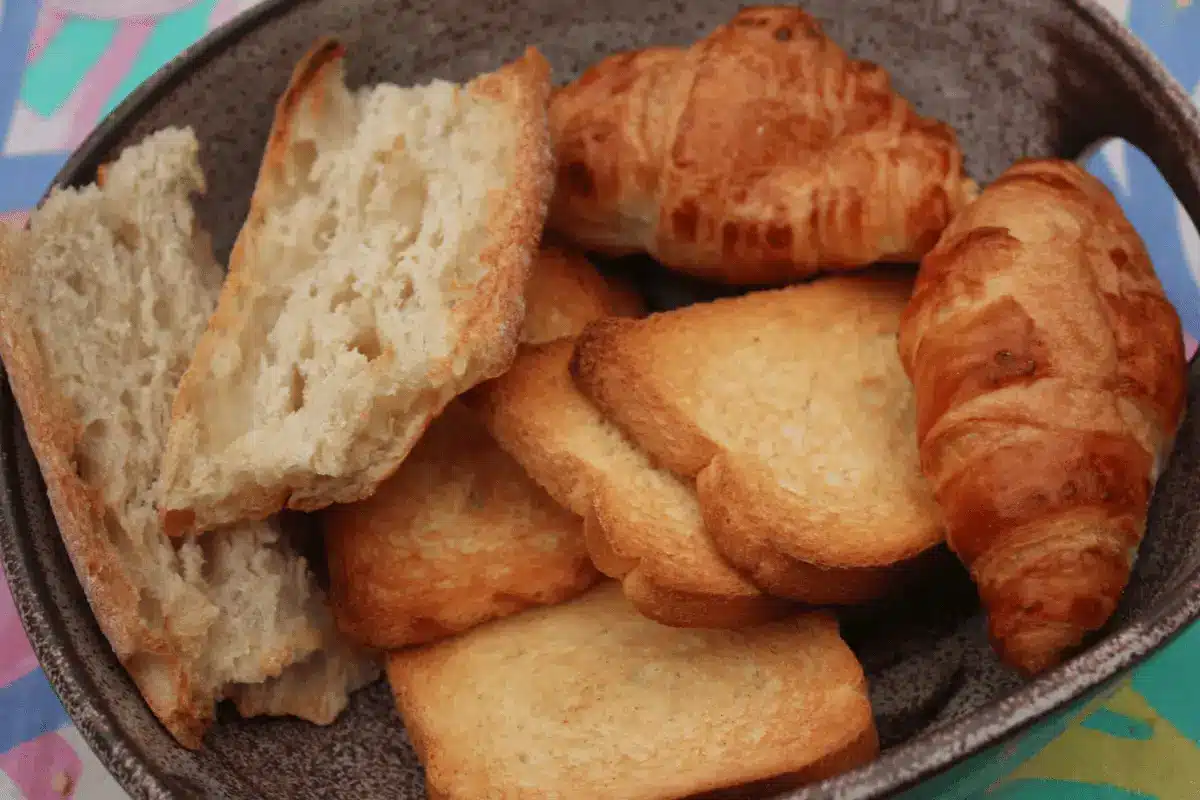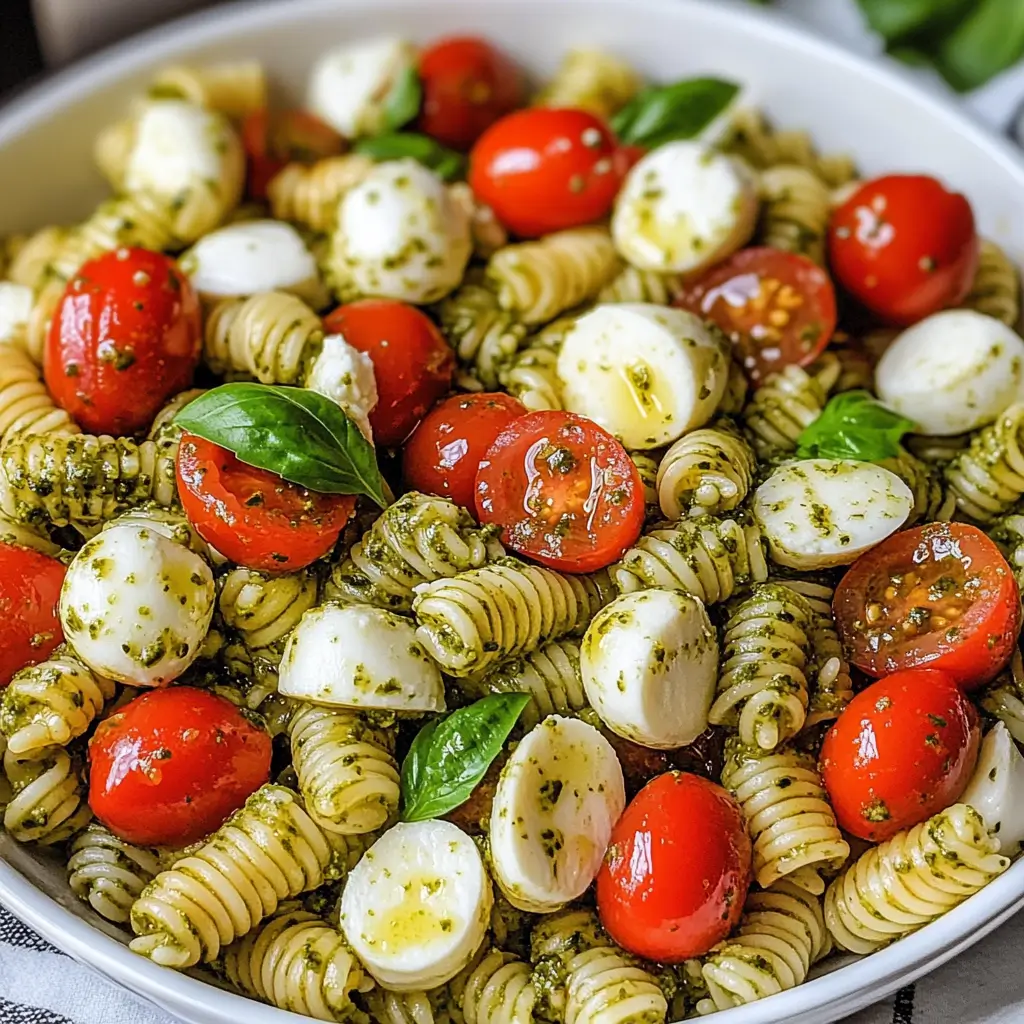In the culinary world, where tradition meets innovation, croissant toast emerges as a delightful fusion, captivating the taste buds of food enthusiasts everywhere. This article delves into the essence of croissant toast, exploring its origins, the meticulous process of crafting it, and its versatile culinary applications. From the flaky layers that define its texture to the artisanal techniques behind its creation, we embark on a journey to uncover the secrets of this gourmet delight. Along the way, we’ll provide insights into nutritional aspects, purchasing tips, and answer some frequently asked questions, ensuring you’re well-equipped to enjoy croissant toast in all its glory. So, let’s slice into the world of croissant toast and discover what makes it a must-try for anyone who appreciates the finer things in life.
Part 1: Introduction to Croissant Toast
Croissant toast, a novel twist on the classic croissant, offers a unique culinary experience that bridges the gap between a beloved French pastry and the convenience of sliced bread. But, Is Croissant Bread Explained? At its heart, it’s a reimagined croissant, baked in a loaf form to create slices that fit perfectly in your toaster. This ingenious adaptation not only enhances its practicality but also retains the buttery, flaky essence that croissant lovers cherish.
What is Croissant Toast?
Imagine the buttery layers of a traditional croissant, now available in a form that’s as easy to use as your everyday bread. Croissant toast is exactly that – a loaf of him dough, pre-sliced for your convenience. This innovation means no more struggling to fit a croissant into a toaster or dealing with the mess of flaky crumbs.
The Origin and Evolution of Croissant Toast
The journey of croissant toast begins in the heart of France, where the has long been a staple of daily life. Bakers, always on the lookout for ways to innovate while honoring tradition, saw an opportunity to adapt the croissant for modern lifestyles. The goal was simple: make it more accessible and versatile, without compromising its artisanal quality. Thus, croissant toast was born, combining the elegance of French baking with the practicality needed in today’s fast-paced world.
Croissant toast represents more than just a culinary trend; it’s a testament to the evolution of baking, where creativity and tradition blend seamlessly. As we continue to explore the facets of it , we’ll uncover the craftsmanship behind its creation, the variety of flavors it offers, and the myriad ways it can elevate your meals. Whether you’re a long-time croissant aficionado or new to this flaky delight, croissant toast is poised to become a cherished addition to your culinary repertoire.
Part 2: The Making of Croissant Toast

Diving into the artistry behind croissant toast, it’s clear that this isn’t just any ordinary breakfast option. The process is a Making Croissant Bread Guide, where every ingredient and step is crucial to achieving that perfect flakiness and rich flavor. Let’s peel back the layers to understand what goes into making this delightful pastry.
Ingredients and Variations
At the core of him are high-quality ingredients that set the foundation for its exceptional taste. Central Milling flour, known for its superior quality, serves as the backbone, providing the dough with the right structure and texture. Coupled with American dairy, which adds richness and depth, the base for him toast is nothing short of premium. The absence of eggs, non-GMO ingredients, and a commitment to no trans fats or artificial preservatives ensure that each slice is not only delicious but also mindful of health and dietary preferences.
Variety is the spice of life, and it is embraces this wholeheartedly with flavors like Butter, Everything, Vegan, Cinnamon, Chocolate, and Pumpkin. Each variant offers a unique taste experience, catering to different palates and preferences.
The Baking Process: From Dough to Toast
The transformation of simple ingredients into the flaky, buttery layers of croissant toast is nothing short of magical. It begins in the early hours of the morning, around 2 am, when bakers start the process in the manufacture facility. The dough undergoes a two-day journey, where it’s allowed to rest at very low temperatures. This slow fermentation is crucial, as it prevents the yeast from activating too soon, which could lead to premature rising.
The true secret behind the irresistible texture of him lies in its 27 layers of dough and butter. Achieving this requires precise folding and rolling, a technique that demands skill and patience. Once baked, the result is a loaf that, when sliced and toasted, offers a crispy exterior and a tender, melt-in-your-mouth interior that’s unparalleled.
The Secret Behind the 27 Layers
The hallmark of him is undoubtedly its 27 distinct layers, each contributing to its flaky texture and rich flavor. This layering technique, borrowed from traditional croissant making, involves carefully incorporating butter between layers of dough. As the croissant toast bakes, the butter melts, creating steam that separates the layers, resulting in the pastry’s characteristic flakiness. This intricate process not only showcases the craftsmanship involved in baking him but also elevates it from a simple breakfast item to a gourmet experience.
In crafting it, bakers blend the essence of French pastry art with the convenience demanded by contemporary life. The result is a product that respects the heritage of the croissant while offering a new, versatile way to enjoy its delightful taste. Whether you’re indulging in a slice of Butter croissant toast with your morning coffee or experimenting with the Chocolate variant for a sweet treat, the making of him ensures that each bite is a testament to the art of baking.
Part 3: Culinary Delights

Croissant toast isn’t just a marvel of baking—it’s a canvas for culinary creativity. Its versatility makes it a stellar choice for both sweet and savory dishes, transforming ordinary meals into gourmet experiences. Let’s explore the endless possibilities that is brings to the table.
Breakfast and Brunch Ideas
Starting your day with croissant toast means elevating your breakfast or brunch from mundane to extraordinary. Imagine topping a warm, crispy slice with creamy avocado and a perfectly poached egg, sprinkled with a dash of sea salt and cracked pepper. Or, for those with a sweet tooth, slathering it with rich, dark chocolate spread and a sprinkle of chopped hazelnuts for a decadent morning treat. The possibilities are as limitless as your imagination, making every breakfast an opportunity to indulge in a bit of culinary creativity.
Sweet and Savory Pairings
The beauty of croissant toast lies in its ability to complement a wide range of toppings and ingredients. For a savory twist, pair it with smoked salmon, cream cheese, and a touch of dill, creating a sophisticated dish that’s perfect for a light lunch or brunch. On the sweeter side, a layer of fresh ricotta cheese topped with honey, figs, and a sprinkle of cinnamon can transform your croissant toast into a dessert-worthy creation. These pairings not only showcase the flexibility of croissant toast but also encourage experimentation with flavors and textures.
Innovative Recipes Incorporating Croissant Toast
Croissant toast’s application extends beyond simple toppings; it’s an ingredient that can revolutionize traditional recipes. Consider, for instance, a croissant toast French toast, where slices are dipped in a mixture of milk, eggs, and vanilla, then pan-fried to golden perfection. The result is a breakfast dish with an extra layer of texture and flavor, making it a surefire hit for any occasion.
Another innovative use is in savory bread puddings, where croissant toast is combined with ingredients like sautéed mushrooms, gruyere cheese, and fresh herbs. Baked until golden and bubbly, this dish offers a new take on comfort food, with the croissant toast adding a luxurious twist.
Croissant toast opens up a world of culinary possibilities, from simple, elegant breakfasts to complex, flavor-packed dishes. Its versatility and unique texture make it a valuable addition to any meal, encouraging both seasoned chefs and casual cooks to explore new culinary horizons. Whether you’re crafting a simple toast with jam or incorporating it into sophisticated recipes, croissant toast is sure to elevate your dining experience.
Part 4: Health and Nutrition
In today’s health-conscious world, it’s essential to consider the nutritional aspects of our favorite foods. Croissant toast, with its buttery layers and artisanal charm, might raise questions about its place in a balanced diet. Let’s delve into the health and nutrition profile of croissant toast, shedding light on how this delightful pastry fits into your wellness goals.
Nutritional Profile of Croissant Toast
At first glance, croissant toast might seem like a decadent indulgence. However, when we break down its components, we find a balance of carbohydrates, fats, and, to a lesser extent, proteins. The primary ingredient, Central Milling flour, provides a good source of energy through complex carbohydrates. The American dairy used, particularly butter, contributes to the fat content, which is essential for flavor and texture.
It’s important to note that croissant toast is made with non-GMO ingredients, no trans fats, and no artificial preservatives, aligning with a preference for cleaner, more natural foods. While it’s richer than your average slice of bread, moderation and balance are key. Pairing a slice of croissant toast with nutrient-dense toppings like avocado or salmon can create a more balanced meal.
Comparing Health Benefits: Croissant Toast vs. Traditional Croissants
When comparing croissant toast to traditional croissants, the differences in health benefits might not be vast, but the form factor of croissant toast offers a unique advantage. Its sliceable nature allows for better portion control, making it easier to integrate into a balanced diet without overindulgence. Furthermore, the variations available, such as the Vegan and Whole Grain options, provide alternatives that cater to different dietary needs and preferences, offering a broader spectrum of nutritional benefits.
Croissant toast, like any food, can be part of a healthy diet when consumed in moderation and paired with wholesome ingredients. Its artisanal quality and absence of artificial additives make it a preferable choice for those looking to enjoy the finer things in life without compromising their health goals. Whether enjoyed as part of a balanced breakfast or as a base for a nutritious meal, croissant toast offers a blend of indulgence and nutrition that can satisfy both the palate and the body’s needs.
In the realm of health and nutrition, croissant toast presents an opportunity to enjoy a gourmet experience while being mindful of dietary choices. By understanding its nutritional profile and making conscious decisions about how to incorporate it into meals, food enthusiasts can savor the unique flavors and textures of croissant toast without straying from their wellness path.
Part 5: Consumer Guide
Navigating the world of croissant toast can be as exciting as it is delicious. Whether you’re a first-time buyer or a seasoned aficionado looking to explore new varieties, knowing where to buy and how to store your croissant toast can enhance your experience. This section serves as a comprehensive guide to ensure your croissant toast adventure is nothing short of delightful.
Where to Buy and How to Store Croissant Toast
Croissant toast has made its way into various outlets, from artisan bakeries to select supermarkets. For those seeking the freshest experience, local bakeries, especially those specializing in French pastries, are your go-to spots. These establishments often offer the widest variety of flavors, from the classic butter to more adventurous options like chocolate and pumpkin.
For convenience, selected supermarkets and gourmet food stores have started to stock croissant toast, particularly in urban and metropolitan areas. Brands like La Boulangerie de San Francisco have made it possible to enjoy this delicacy beyond the bakery’s locale, offering nationwide shipping through their websites. This accessibility ensures that no matter where you are, a slice of croissant toast is within reach.
Storing croissant toast properly is crucial to maintaining its freshness and flakiness. If you plan to consume it within a day or two, keeping it at room temperature in a bread box or a tightly sealed bag is sufficient. For longer storage, freezing is an excellent option. Wrap the loaf or individual slices in plastic wrap and then in foil to protect against freezer burn. When you’re ready to enjoy, simply toast it directly from frozen, and it will be as good as fresh.
Preparing Croissant Toast for the Best Experience
To fully appreciate the nuances of him, proper preparation is key. Toasting enhances its inherent buttery flavor and flaky texture, making it an ideal canvas for both sweet and savory toppings. A light toasting, just until the edges are golden brown, is perfect for maintaining the delicate balance between crispness and tenderness.
Experimenting with toppings and spreads can turn a simple slice of him into a culinary masterpiece. From high-quality jams and artisanal cheeses to fresh fruits and smoked meats, the possibilities are endless. The key is to start with a solid foundation—a perfectly toasted slice of it—and let your creativity and taste preferences guide you.
In this consumer guide, we’ve explored the essentials of enjoying croissant toast to its fullest, from purchase to preparation. With this knowledge, you’re well-equipped to embark on a journey of culinary discovery, one slice at a time. Whether enjoyed in its simplest form or as part of a more elaborate dish, croissant toast offers a versatile and delicious experience that’s sure to satisfy any palate.
Part 6: Frequently Asked Questions
Croissant toast, with its flaky layers and rich flavor, has sparked curiosity and excitement among food lovers. As its popularity grows, so do the questions surrounding it. This section aims to address some of the most frequently asked questions, providing clarity and insight into the delightful world of croissant toast.
What makes croissant toast different from regular toast or croissants?
Croissant toast uniquely bridges the gap between traditional toast and croissants, offering the best of both worlds. Unlike regular toast, which is typically made from sliced bread, croissant toast is crafted from him dough that’s baked in a loaf form. This process results in a product that combines the convenience and versatility of toast with the buttery, flaky texture of croissants. It’s this distinctive combination that sets is apart, making it a versatile choice for a variety of dishes.
Can croissant toast be made vegan or gluten-free?
Yes, one of the exciting aspects of is its adaptability, including options for those with specific dietary preferences or restrictions. Vegan croissant toast substitutes traditional butter with plant-based alternatives, ensuring the final product retains its characteristic flakiness and richness without using animal products. Gluten-free versions, while more challenging due to the need for gluten to create the classic texture, are also possible by using alternative flours and adjusting the baking technique to mimic the layers and flakiness as closely as possible.
How long does croissant toast last, and how should it be stored?
it is best enjoyed fresh, but it can last for 2-3 days when stored properly at room temperature. To extend its shelf life, you can store croissant toast in the refrigerator for up to a week or freeze it for up to a month. For optimal freshness, keep it in an airtight container or wrap it tightly in plastic wrap to prevent it from drying out or absorbing odors. When you’re ready to enjoy it, simply reheat it in a toaster or oven to restore its warmth and crispness.
These FAQs shed light on some of the common inquiries about croissant toast, highlighting its unique qualities, versatility, and storage tips. Whether you’re a seasoned enthusiast or new to the concept, understanding these aspects can enhance your appreciation and enjoyment of him , making it a delightful addition to your culinary repertoire.
Part 7: Exploring Related Terms
In the realm of culinary delights, croissant toast stands out not just for its taste but also for its connection to a broader spectrum of concepts and keywords. Understanding these related terms can enrich our appreciation and knowledge of him, offering insights into its versatility, cultural significance, and culinary potential. Let’s dive into some of these LSI (Latent Semantic Indexing) and NLP (Natural Language Processing) keywords to explore the fascinating world around him.
Artisanal Baking
At the heart of croissant toast is the art of Mastering Croissant Bread Baking Guide, a practice that emphasizes handcrafted quality, traditional techniques, and natural ingredients. This approach ensures that each loaf of him is not just food but a piece of culinary art, reflecting the skill and passion of the baker. Artisanal baking is about respecting the process and the product, resulting in a is that’s superior in taste and texture.
Flaky Pastry
The term “flaky pastry” is central to understanding the appeal of it. It refers to the light, airy layers that are the hallmark of well-made croissants and, by extension, croissant toast. Achieving this flakiness requires mastery in handling dough and fat, usually butter, to create layers that puff up during baking. This texture is what makes it a delight to eat, offering a sensory experience with each bite.
French Cuisine
Croissant toast is deeply rooted in French cuisine, drawing from the country’s rich culinary traditions. French cuisine is known for its emphasis on quality ingredients, meticulous preparation, and elegant presentation. It embodies these principles, transforming the humble croissant into a versatile, modern dish that still pays homage to its French origins.
Gourmet Toast
In recent years, gourmet toast has emerged as a trend, elevating the simple act of toasting bread into an art form. It fits perfectly within this trend, offering a unique twist on the concept. It goes beyond the basic toast, providing a richer, more nuanced base for a variety of toppings and culinary experiments.
Pastry Innovation
Croissant toast represents pastry innovation, showcasing how traditional techniques can be adapted to meet contemporary tastes and lifestyles. Innovation in pastry involves exploring new flavors, formats, and applications, all while maintaining the essence of the original. It is a prime example of this, offering a new way to enjoy the classic croissant.
Understanding these related terms and concepts helps us appreciate croissant toast’s place within the broader culinary landscape. It’s a testament to the ongoing evolution of food, where tradition and innovation intersect to create something truly special. Whether enjoyed in its simplest form or as part of a more elaborate dish, it offers a versatile and delicious experience that’s deeply rooted in culinary artistry.
conclusion
With the exploration of croissant toast from its origins to its place in modern culinary trends, we’ve traversed a delicious landscape of flavors, techniques, and innovations. It a delightful twist on traditional French pastry, encapsulates the evolution of baking and gastronomy, blending the artisanal with the accessible. This journey through the world of him not only highlights its versatility and culinary potential but also its ability to connect us with broader food cultures and trends.
As we conclude, it’s clear that it is more than just a breakfast item or a snack; it’s a symbol of how food can evolve and adapt, bringing together the best of tradition and innovation. Whether you’re savoring a slice topped with avocado and egg for brunch, enjoying it as the base for a gourmet sandwich, or experimenting with it in sweet and savory recipes, it is offers endless possibilities for enjoyment and creativity.
The exploration of related terms like artisanal baking, flaky pastry, and gourmet toast has deepened our understanding of croissant toast’s place in the culinary world. It stands at the intersection of craftsmanship and convenience, offering a unique experience that’s rooted in quality and innovation.
In embracing croissant toast, we’re not just indulging in a delicious treat; we’re participating in a culinary tradition that values quality, creativity, and the joy of eating. So, the next time you bite into a piece of it, remember that you’re experiencing a piece of culinary art that’s rich in history, flavor, and potential. Whether enjoyed in its simplest form or as part of an elaborate dish, it is a testament to the beauty of baking and the endless possibilities that come when we’re willing to explore and innovate within the world of food.
Recommended External Links
- Central Milling – For information on high-quality flour used in croissant toast.
- Anchor text: “Central Milling flour”
- American Dairy Association – For insights into the dairy products in croissant toast.
- Anchor text: “American dairy”
- Non-GMO Project – For details on non-GMO ingredients in food products.
- Anchor text: “non-GMO ingredients”



